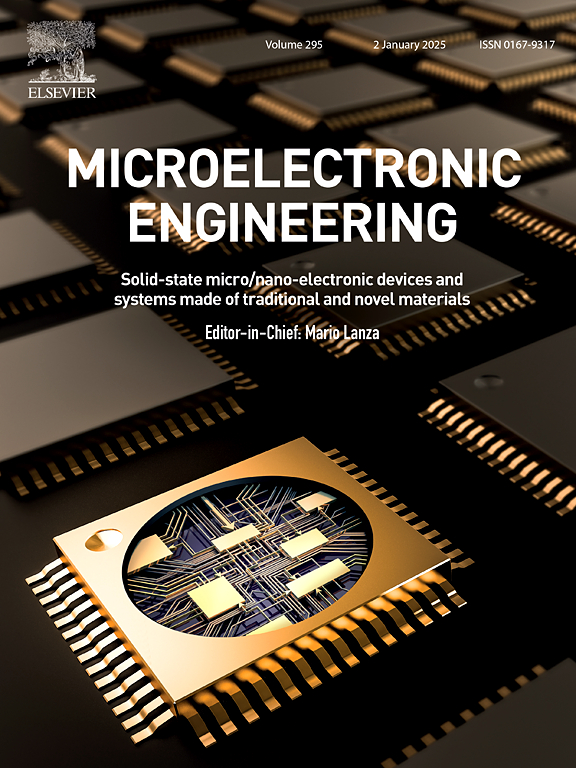用第一性原理计算了单层Mo(SxSe1-x)2的电子和光学性质
IF 3.1
4区 工程技术
Q2 ENGINEERING, ELECTRICAL & ELECTRONIC
引用次数: 0
摘要
利用第一性原理计算探讨了单层Mo(SxSe1-x)2的电子和光学性质。发现单层Mo(SxSe1-x)2具有直接带隙。通过理论和实验数据的拟合,得到了0.051 eV的带隙弯曲参数。带隙能量的增大是由于K - VBM的衰减引起的。在全分量范围内,K - CBM和K - VBM的下降分别由pS−3p−dMo−4d耦合作用和总p-d耦合作用主导。对于光学性质,发现增加S分量可以降低静态介电常数。而随着S分量的增加,B、C激子以及E3向高能方向移动。增加S组分对增强光吸收的作用较小。光电导率与吸收率有相似的结果。本文章由计算机程序翻译,如有差异,请以英文原文为准。

The electronic and optical properties of the monolayer Mo(SxSe1-x)2 by the first-principle calculations
First-principles calculations are conducted to explore the electronic and optical properties of the monolayer Mo(SxSe1-x)2. It is found that the monolayer Mo(SxSe1-x)2 possesses a direct bandgap. Through fitting the theoretical and experimental data, the bandgap bowing parameter of 0.051 eV is attained. The enlargement of the bandgap energy is by reason of the decline of the K VBM. In the full component range, the downward movements of the K CBM and the K VBM are dominated by the coupling interaction and the total p-d coupling interaction, respectively. For the optical properties, it is found that increasing S component can reduce the static dielectric constant. However, the B and C excitons as well as E3 shift toward the higher energy direction with increasing S component. It is also found that increasing S component has a small effect on enhancing the light absorption. The photoconductivity shows a similar result with the absorptivity.
求助全文
通过发布文献求助,成功后即可免费获取论文全文。
去求助
来源期刊

Microelectronic Engineering
工程技术-工程:电子与电气
CiteScore
5.30
自引率
4.30%
发文量
131
审稿时长
29 days
期刊介绍:
Microelectronic Engineering is the premier nanoprocessing, and nanotechnology journal focusing on fabrication of electronic, photonic, bioelectronic, electromechanic and fluidic devices and systems, and their applications in the broad areas of electronics, photonics, energy, life sciences, and environment. It covers also the expanding interdisciplinary field of "more than Moore" and "beyond Moore" integrated nanoelectronics / photonics and micro-/nano-/bio-systems. Through its unique mixture of peer-reviewed articles, reviews, accelerated publications, short and Technical notes, and the latest research news on key developments, Microelectronic Engineering provides comprehensive coverage of this exciting, interdisciplinary and dynamic new field for researchers in academia and professionals in industry.
 求助内容:
求助内容: 应助结果提醒方式:
应助结果提醒方式:


